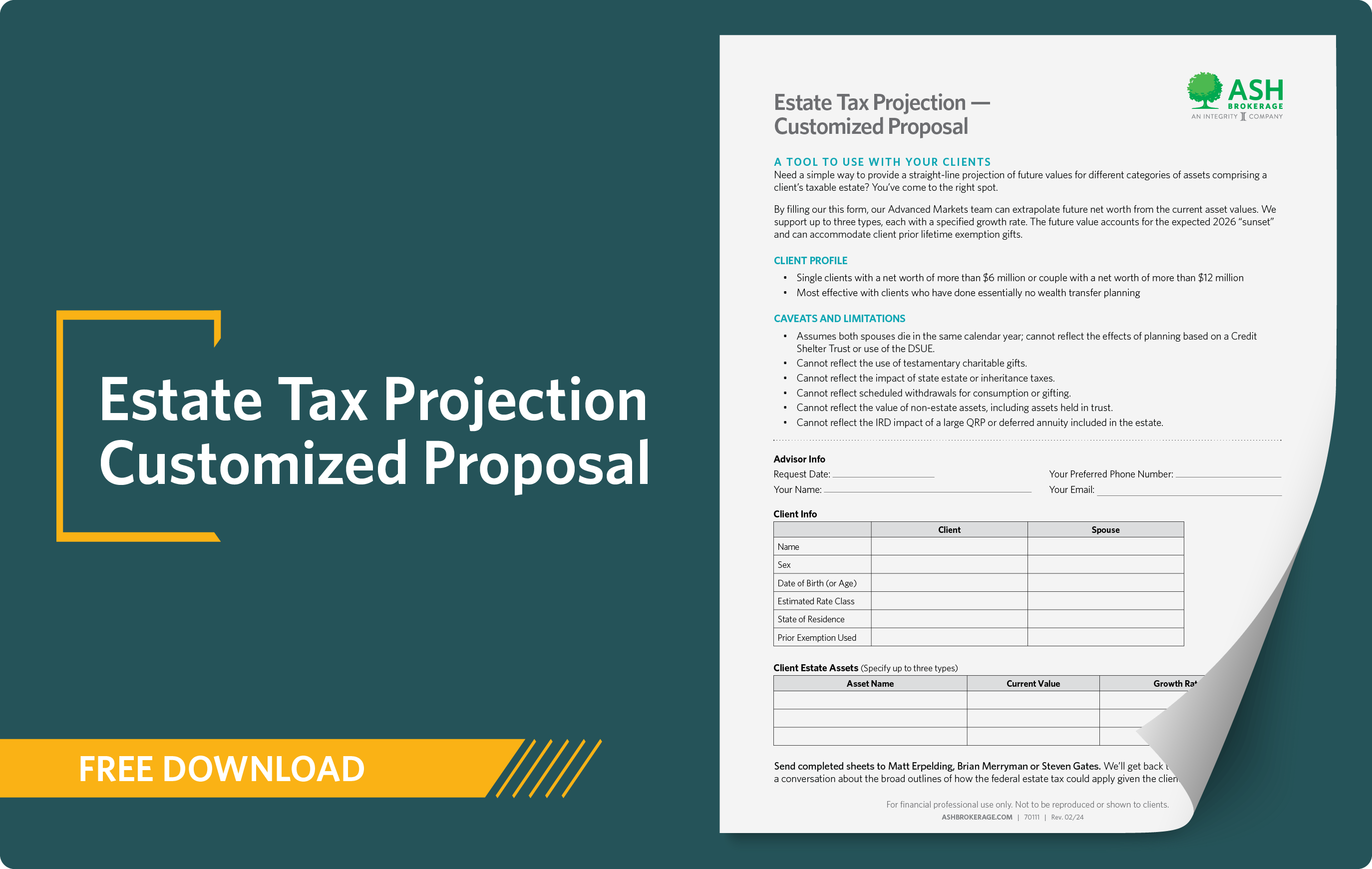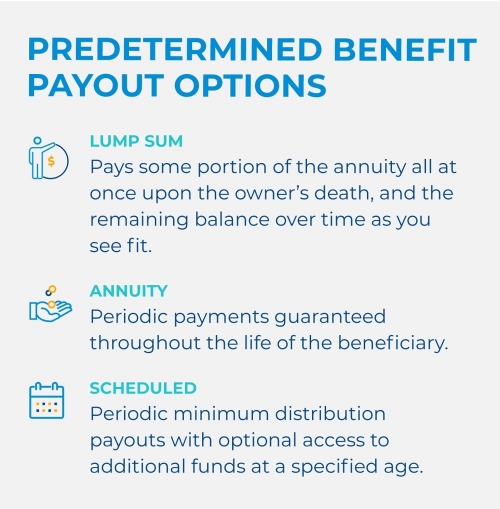All Categories
Featured
Table of Contents
This five-year general guideline and 2 adhering to exceptions apply only when the proprietor's fatality activates the payout. Annuitant-driven payments are discussed listed below. The first exemption to the basic five-year rule for private beneficiaries is to approve the survivor benefit over a longer period, not to exceed the expected life time of the recipient.
If the beneficiary chooses to take the death advantages in this technique, the advantages are taxed like any type of various other annuity repayments: partially as tax-free return of principal and partly gross income. The exclusion proportion is located by utilizing the deceased contractholder's cost basis and the anticipated payouts based on the recipient's life expectations (of shorter duration, if that is what the recipient selects).
In this approach, in some cases called a "stretch annuity", the recipient takes a withdrawal yearly-- the required quantity of every year's withdrawal is based on the exact same tables made use of to determine the called for distributions from an IRA. There are 2 benefits to this approach. One, the account is not annuitized so the beneficiary preserves control over the cash money worth in the agreement.
The second exemption to the five-year rule is readily available only to an enduring partner. If the designated beneficiary is the contractholder's partner, the spouse may choose to "enter the footwear" of the decedent. Effectively, the partner is dealt with as if he or she were the proprietor of the annuity from its inception.
Tax implications of inheriting a Fixed Income Annuities
Please note this applies only if the spouse is called as a "assigned beneficiary"; it is not readily available, for example, if a depend on is the recipient and the spouse is the trustee. The general five-year guideline and the 2 exceptions only relate to owner-driven annuities, not annuitant-driven agreements. Annuitant-driven agreements will pay death advantages when the annuitant dies.

For objectives of this discussion, think that the annuitant and the owner are different - Annuity cash value. If the contract is annuitant-driven and the annuitant passes away, the death triggers the death advantages and the beneficiary has 60 days to decide just how to take the survivor benefit based on the regards to the annuity agreement
Also note that the option of a partner to "enter the shoes" of the owner will certainly not be offered-- that exception applies only when the owner has died yet the owner didn't pass away in the instance, the annuitant did. Finally, if the beneficiary is under age 59, the "death" exception to avoid the 10% charge will certainly not use to a premature distribution again, since that is readily available just on the death of the contractholder (not the death of the annuitant).
Lots of annuity business have inner underwriting plans that reject to issue agreements that name a various proprietor and annuitant. (There may be weird circumstances in which an annuitant-driven agreement meets a customers one-of-a-kind needs, however typically the tax negative aspects will certainly exceed the advantages - Long-term annuities.) Jointly-owned annuities might position similar problems-- or at the very least they might not serve the estate preparation feature that various other jointly-held assets do
Because of this, the fatality advantages must be paid out within 5 years of the initial proprietor's fatality, or based on the two exceptions (annuitization or spousal continuance). If an annuity is held collectively between a partner and spouse it would certainly show up that if one were to pass away, the other might simply proceed ownership under the spousal continuance exception.
Think that the spouse and partner named their boy as recipient of their jointly-owned annuity. Upon the fatality of either proprietor, the firm needs to pay the fatality advantages to the boy, who is the beneficiary, not the making it through partner and this would most likely beat the owner's purposes. At a minimum, this instance points out the complexity and uncertainty that jointly-held annuities pose.
How does Variable Annuities inheritance affect taxes
D-Man wrote: Mon May 20, 2024 3:50 pm Alan S. wrote: Mon May 20, 2024 2:31 pm D-Man composed: Mon May 20, 2024 1:36 pm Thank you. Was hoping there may be a device like establishing up a beneficiary individual retirement account, however resembles they is not the instance when the estate is arrangement as a beneficiary.

That does not determine the sort of account holding the acquired annuity. If the annuity was in an acquired individual retirement account annuity, you as administrator need to be able to assign the inherited individual retirement account annuities out of the estate to acquired Individual retirement accounts for every estate beneficiary. This transfer is not a taxed occasion.
Any kind of circulations made from acquired IRAs after assignment are taxed to the recipient that got them at their average earnings tax price for the year of circulations. If the inherited annuities were not in an IRA at her death, then there is no method to do a straight rollover right into an acquired Individual retirement account for either the estate or the estate recipients.
If that occurs, you can still pass the circulation through the estate to the individual estate beneficiaries. The tax return for the estate (Type 1041) could consist of Form K-1, passing the revenue from the estate to the estate beneficiaries to be exhausted at their private tax rates as opposed to the much greater estate revenue tax prices.
How does Flexible Premium Annuities inheritance affect taxes

: We will create a strategy that consists of the very best products and attributes, such as improved survivor benefit, costs bonuses, and irreversible life insurance.: Get a personalized strategy created to optimize your estate's value and reduce tax obligation liabilities.: Execute the picked method and get ongoing support.: We will assist you with setting up the annuities and life insurance coverage plans, offering constant guidance to guarantee the strategy stays reliable.
Ought to the inheritance be pertained to as an income connected to a decedent, after that tax obligations might use. Generally speaking, no. With exception to retired life accounts (such as a 401(k), 403(b), or individual retirement account), life insurance policy earnings, and financial savings bond interest, the beneficiary normally will not need to birth any type of income tax on their inherited wide range.
The quantity one can inherit from a count on without paying tax obligations relies on various variables. The federal inheritance tax exemption (Annuity payouts) in the United States is $13.61 million for individuals and $27.2 million for couples in 2024. Private states may have their own estate tax obligation policies. It is recommended to seek advice from with a tax obligation specialist for accurate details on this issue.

His goal is to simplify retired life planning and insurance policy, guaranteeing that clients comprehend their options and secure the most effective protection at irresistible rates. Shawn is the creator of The Annuity Specialist, an independent on-line insurance agency servicing customers across the United States. Through this platform, he and his group aim to remove the uncertainty in retirement preparation by aiding people discover the very best insurance policy protection at one of the most competitive rates.
Table of Contents
Latest Posts
Decoding How Investment Plans Work A Comprehensive Guide to Investment Choices Defining Annuities Variable Vs Fixed Pros and Cons of Variable Annuity Vs Fixed Indexed Annuity Why Choosing the Right Fi
Highlighting Variable Annuity Vs Fixed Annuity A Closer Look at How Retirement Planning Works Defining the Right Financial Strategy Features of Smart Investment Choices Why Choosing the Right Financia
Understanding Financial Strategies A Comprehensive Guide to Annuity Fixed Vs Variable Breaking Down the Basics of Fixed Vs Variable Annuity Pros And Cons Advantages and Disadvantages of Different Reti
More
Latest Posts